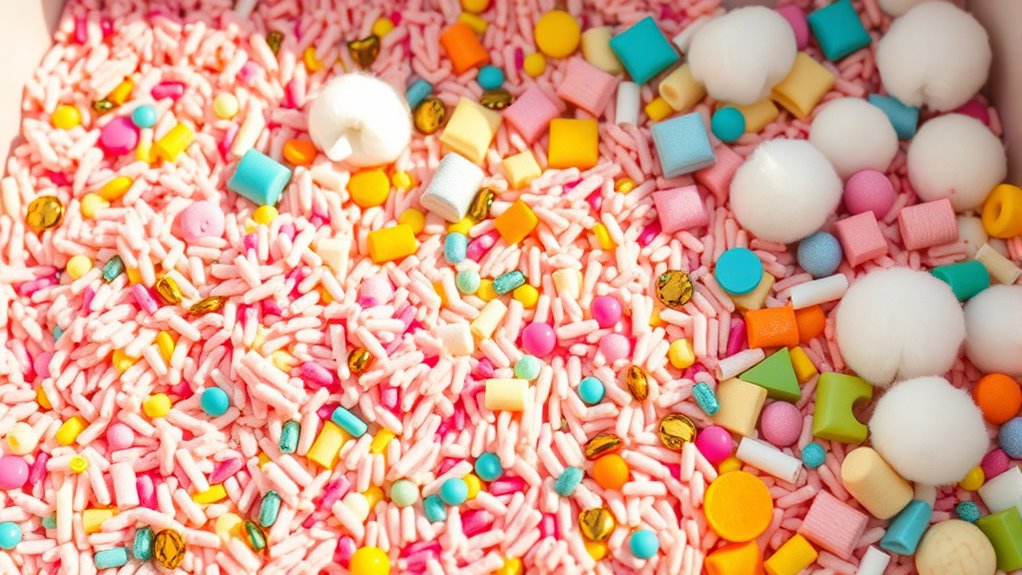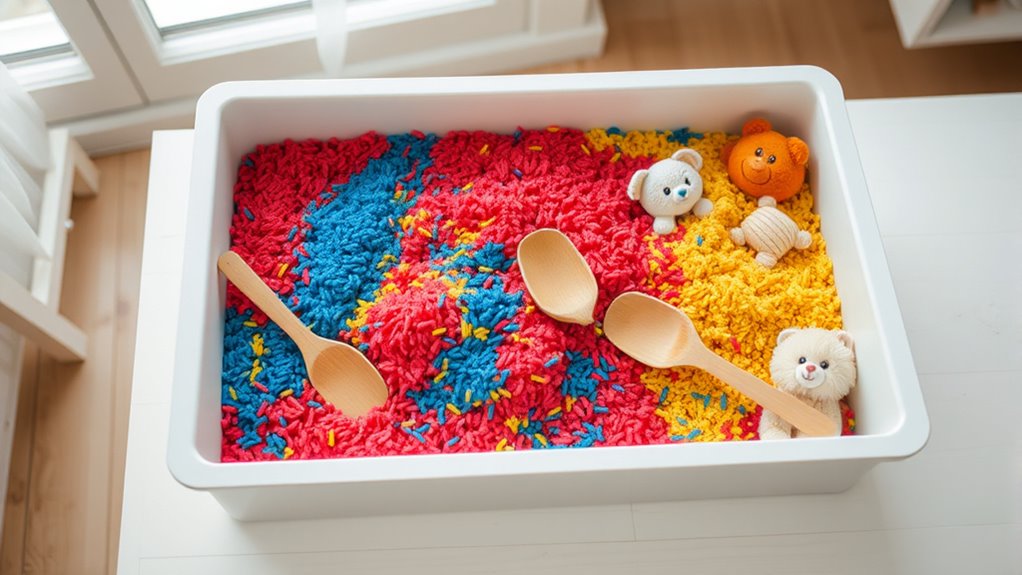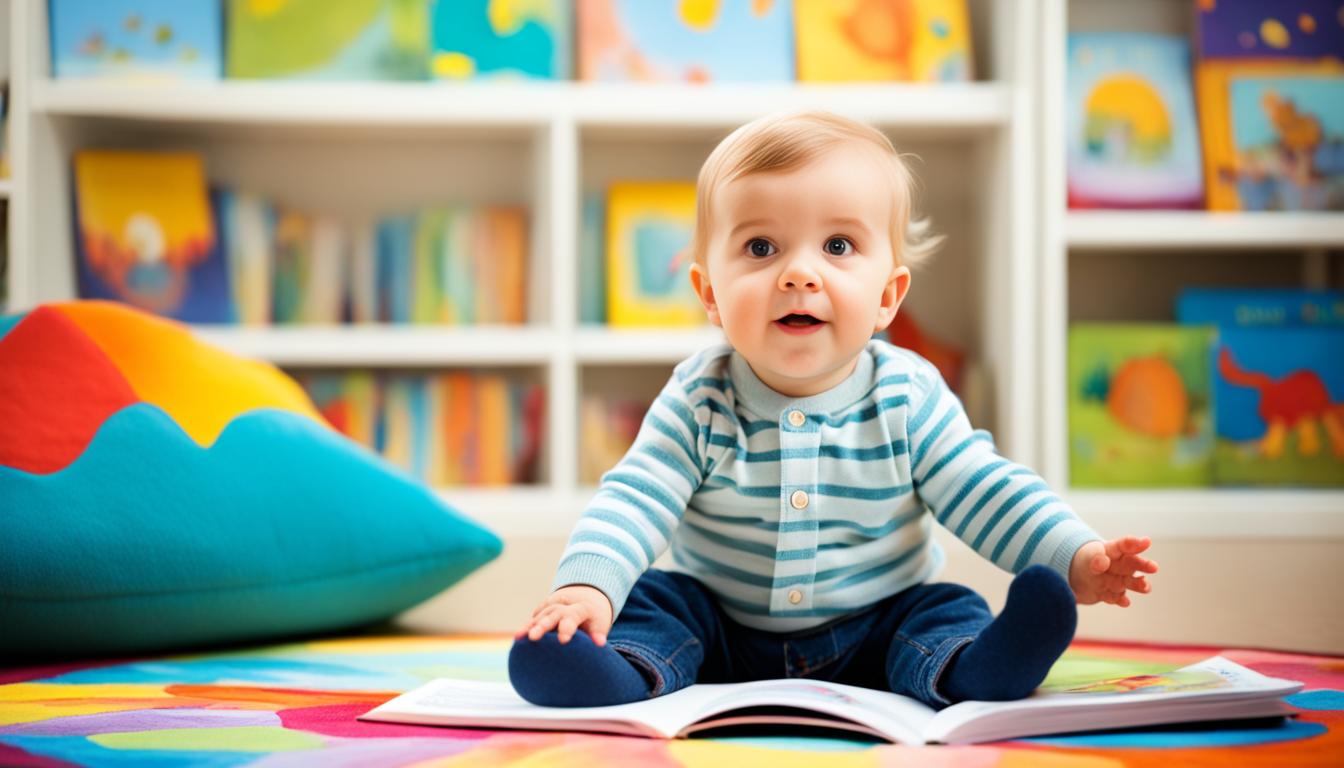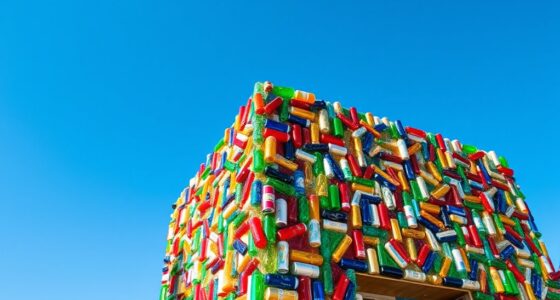Sensory bins are a safe and simple way to encourage hands-on exploration and sensory development. You can easily create them using household items like rice, pasta, or beans, adding small toys or textures for engagement. Keep materials non-toxic, supervise play, and customize themes to suit interests or learning goals. With versatile options and easy setups, sensory bins make learning fun and safe. Keep exploring, and you’ll discover how to make these activities even more engaging.
Key Takeaways
- Use non-toxic, child-safe materials like rice, pasta, beans, or shredded paper for easy cleanup and safety.
- Incorporate household items and natural elements to create engaging, textured sensory experiences.
- Keep sensory bins simple with minimal ingredients and clear themes tailored to child’s interests.
- Supervise play to prevent choking hazards and ensure appropriate tool use for safety.
- Regularly rotate themes and materials to maintain curiosity and promote ongoing sensory development.

Sensory bins are versatile and engaging tools that encourage exploration and learning through hands-on play. They offer a simple way to stimulate your child’s senses while fostering creativity and fine motor skills. One of the best parts about sensory bins is the variety of sensory bin themes you can choose from. Whether it’s a beach scene, a garden, or a winter wonderland, customizing the theme keeps playtime fresh and exciting. You can easily tailor each bin to match your child’s interests or current classroom units, making learning both fun and relevant.
Creating your own sensory bin is straightforward, and DIY sensory bin ideas are endless. You don’t need fancy equipment—just some common household items and a bit of imagination. For instance, fill a bin with rice dyed in vibrant colors, then add small toys or scoops for digging and pouring. Or, use pasta shapes to create a tactile experience, hiding tiny objects for your child to find. Using everyday items like beans, pasta, or shredded paper, you can craft sensory experiences that are safe and inexpensive. The key is to choose materials that are non-toxic and easy to clean, ensuring safety while keeping the activity manageable.
When brainstorming DIY sensory bin ideas, think about what your child enjoys or what skills you want to develop. For example, if they love animals, you can create a zoo-themed bin with plastic animals, grass made from shredded paper, and small trees from craft supplies. For a calming sensory experience, consider using soft materials like cotton balls or foam shapes. If you’re feeling creative, you might incorporate natural elements like pinecones, shells, or stones to introduce different textures and promote sensory awareness. Incorporating a variety of textures can also enhance sensory processing skills, making the activity even more beneficial.
In addition to themes, you can customize the sensory experience by adding tools like tweezers, funnels, or scoops. These not only make play more engaging but also enhance fine motor skills and hand-eye coordination. Remember to keep the sensory bin at a safe height and supervise play to prevent choking hazards, especially with smaller items. Regularly rotating themes and materials keeps the activity fresh and continues to stimulate your child’s curiosity.
Ultimately, sensory bins are a safe and simple way to encourage sensory exploration and learning. By choosing the right themes and DIY ideas, you create a versatile tool that can grow with your child. They’re easy to set up, budget-friendly, and endlessly customizable, making them a perfect addition to both home and classroom environments. The more you explore different sensory bin themes, the more opportunities you have to foster your child’s development through playful, hands-on discovery.
Frequently Asked Questions
What Are the Best Age Ranges for Sensory Bin Activities?
You should consider age-appropriate activities for sensory bins from around 6 months to 3 years old, as this range offers maximum developmental benefits. Young infants explore through touch, while toddlers develop fine motor skills and curiosity. As your child grows, you can introduce more complex textures and themes. Always supervise to guarantee safety, and tailor activities to your child’s developmental stage for engaging, safe, and enriching experiences.
How Do I Store Sensory Bins Safely for Reuse?
You should store sensory bins in child-proof storage to guarantee safety, especially if little ones can access them. Use labeled containers to keep different themes organized and easily identifiable. Make sure the lids are secure to prevent spills and contamination. Regularly check the contents for wear or damage, and clean them before reuse. By following these steps, you keep your sensory bins safe, organized, and ready for fun whenever your child wants to explore.
Can Sensory Bins Be Made Allergen-Free?
Imagine discovering that your DIY sensory bin can be completely allergen-free—it’s possible! You can use hypoallergenic fillers like rice, oats, or cornstarch, which are safe for sensitive kids. By choosing these materials, you avoid common allergens and create a fun, inclusive activity. With a little planning, your sensory bin becomes a safe, enjoyable experience for everyone, encouraging exploration without worry about allergies or sensitivities.
How Often Should I Clean Sensory Bin Materials?
You should clean sensory bin materials after each use to guarantee sensory bin safety. Regular cleaning prevents bacteria buildup and keeps the materials fresh and safe for children. For frequent use, consider a thorough cleaning at least once a week, and spot clean as needed. Use mild soap and water, and ensure everything dries completely before reusing. Maintaining proper cleaning frequency helps create a safe, hygienic sensory play environment.
Are There Eco-Friendly Options for Sensory Bin Fillers?
Think of eco-friendly fillers as a invigorating gust of fresh air in your sensory world. You can choose biodegradable fillers or natural alternatives like dried beans, rice, or sand, which blend seamlessly into your child’s exploration. These options not only nourish the environment but also spark curiosity. By opting for eco-conscious choices, you turn your sensory bin into a green garden of discovery, nurturing both your child’s senses and the planet.
Conclusion
Think of sensory bins as your child’s secret garden—a safe space where curiosity blooms and imagination takes root. With simple materials, you provide a world of exploration that nurtures their senses and sparks joy. Just as a gardener tends to their plants, you nurture your child’s growth through these calming, engaging experiences. Embrace the magic of sensory bins, turning everyday moments into a vibrant tapestry of discovery and learning.









